[ad_1]
“This mission relies on a super. We promote the choice utilization of land as a way to counter the worldwide phenomena of local weather change and deforestation. We predict that this mission could be a supply of inspiration for anybody inquisitive about nature dialog, biodiversity, and decreasing or compensating carbon emissions,” says Bob van der Bijl, CEO and founding father of Capital Africa Pure Capital Investments. In 2018, he set off for Malindi, Kilifi County, Kenya to pick and buy the land that may become the 500-acre Koromi Farm. Right here, within the coastal woodlands, he and his group propagate and develop a mixture of timber to provide timber, (beauty) oils from tree seeds, and honey. The corporate cooperates with nature conservation NGOs and native communities, aiming to revive native ecosystems.
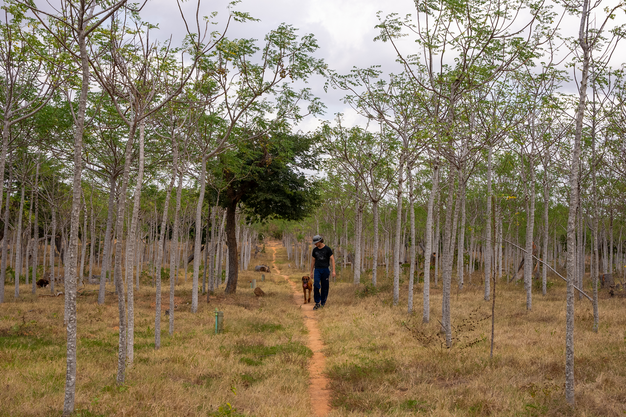
Koromi Farm
Placing principle in follow
Bob: “I was an agribusiness advisor, and I spent many days writing reviews and offering recommendation. At a sure level I felt the necessity to contribute to one thing extra tangible that mitigates the results of local weather change. I imagine that forests and timber assist to stabilize local weather change and are important for biodiversity. Because of this, I made a decision to begin an agroforestry mission in Kenya, as this nation more and more suffers from deforestation and forest degradation. A pal of mine informed me that Kenya’s East coast is a perfect location for this type of tasks, as there’s loads of inexpensive land accessible and the rainfall continues to be enough for the planting of timber. That is how I ended up in Malindi.”
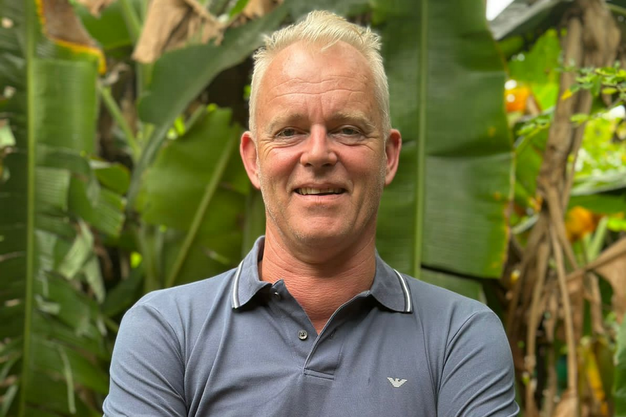
Bob van der Bijl
Aquaforestry
Initially, Bob and his group needed to learn how to place their information and concepts into follow. They not solely needed to discover out which sort of timber develop nicely within the area, but additionally how they may handle their water provide. Bob: “Water was the most important problem of this mission. After planting timber, in our semi-arid local weather it is very important present the seedlings with extra watering to safe a excessive survival fee. I believed a bore-hole would do, however the water turned out to be too saline. Later we tried dams, however that wasn’t an answer both. Ultimately we opted for rainwater harvesting basins with fish in it, and shortly we are going to create pure ponds and swales. Irrigating the timber with the discharge water from fishponds supplies the timber with some extra fertilizer and offers us some extra revenues from fish manufacturing. That is clearly additionally attention-grabbing for native communities, and we have now referred to as this idea ‘aquaforestry'”.
Drought-resistant timber
The restricted quantity of water accessible additionally made Bob and his group change the scope of their mission. “We had initially considered mixing fruit timber with pure timber, however at our mission location they didn’t develop nicely resulting from an absence of water and rainfall that was nicely under 600 mm per yr in some years resulting from La Niña. Consequently, we are actually specializing in drought-resistant timber for timber, and we’re presently exploring the chances of carbon funding. Initially, we centered on timber for timber, however now we additionally develop timber for (beauty) oils, and we’re more and more doing combined planting to keep away from a monoculture. This extra various mixture of timber has a better constructive influence on the area’s biodiversity. We need to create biodiverse programs somewhat than inexperienced deserts. Most of our timber are native timber which are useful for his or her timber, tree seeds oil, and bee forage. We additionally plant a complete vary of timber and shrubs which are vulnerable to extinction. About 50% of our timber are Melia Volkensii timber, the opposite 50% consists of various tree varieties. In the meanwhile, we have now planted over thirty completely different timber species.”
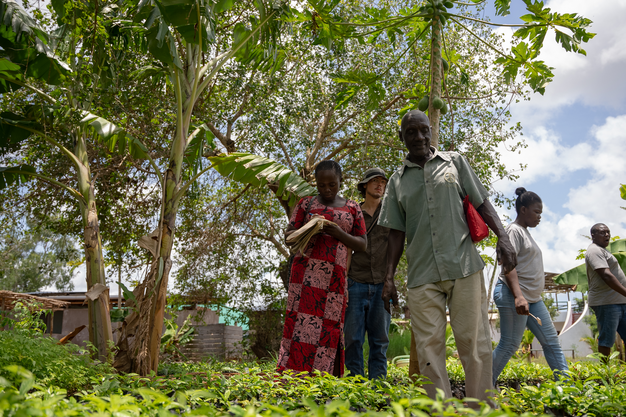
The group at work
Partnerhsips
Bob believes that partnerships with native communities, nature conservation organizations, different agroforestry firms, and industrial traders are essential to have a long-lasting influence on the area and its biodiversity. “Nature conservation organizations like Nature Kenya, and different NGOs give us loads of enter on find out how to function in a sustainable approach. Equally, we cooperate with Dutch water and propagation consultants, resembling Acacia Water and Growpact, to enhance our water administration and cultivation strategies. These collaborations are additionally supported by the Dutch authorities by way of the Agricultural Council of the Netherlands Embassy in Nairobi.”
On the subject of the native communities, Bob finds that they’re usually fairly inquisitive about planting and rising timber: “To start with, in Kenya there are not any chilly winters, permitting timber to develop year-round. Because of this, we offer the locals with seedlings, and once they develop a tree, they’ll promote the timber or tree seeds to us. As well as, some timber such because the Moringa Olifeira can be utilized for consumption, including essential vitamins to the native food regimen. If native communities would additionally obtain carbon-credits for his or her tree planting actions, this may be an enormous sport changer, and we’re presently very busy to develop that. Carbon credit are a type of cost that reward eco-friendly practices.”
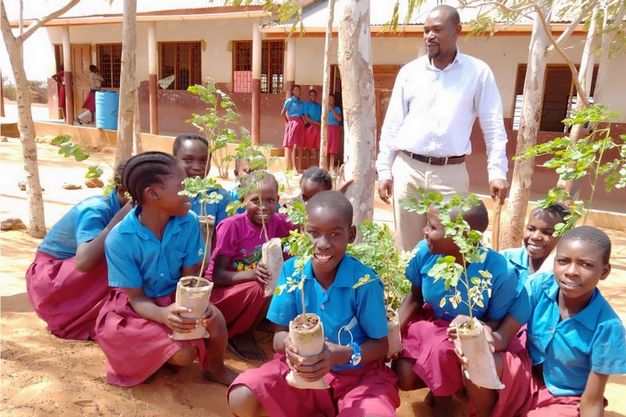
Seedling distribution to native colleges (Moringa Olifeira)
But, Bob highlights that rising the dimensions of the mission is essential to have the ability to develop a carbon mission: “2000 hectares of timber is the minimal, so we have now to extend no less than tenfold. We’re growing an idea whereby we improve our personal landholdings, but additionally carry conservation NGO’s land, and land of native communities on board. We’re continually in search of events which are inquisitive about carbon-projects, and corporations which are prepared to share their technical and cultivation information.”
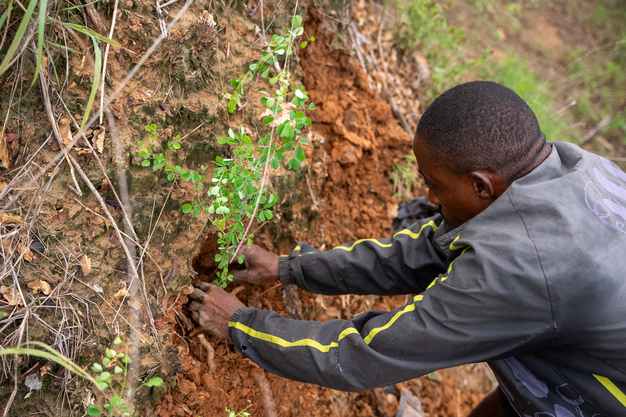
Kenya and past
In keeping with Bob, his strategy to agroforestry has potential in the remainder of Kenya, and different components of the world. “We’re within the east of Kenya for 5 years now, and we all know which timber develop nicely on this semi-arid space, and we have now developed a catalog with monitoring reviews that provides us deep insights into the tree species which are most fitted for the area. All through the years, we acquired concerned in tree propagation to have faster-growing and straighter timber.”
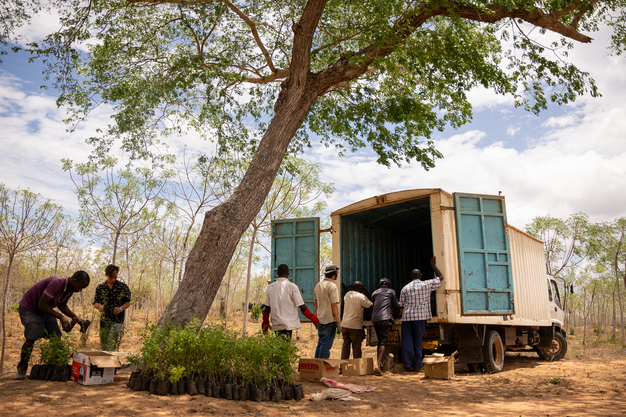
“At present, our focus is on Kenya’s east coast and our preliminary growth will likely be right here. In the long term we might additionally develop our idea to the remainder of the nation, and different components of the world. We predict that our strategy is especially attention-grabbing for different semi-arid areas, such because the Center-East. We imagine that our expertise is efficacious for any nations in which there’s an curiosity in biodiverse reforestation, and carbon-footprint discount. We aren’t an NGO, however our purpose is to have a constructive native influence,” Bob concludes.
For extra info:
Capital Africa Pure Capital Investments
Bob van der Bijl
+254 725 707 814
[email protected]
www.koomifarm.com
[ad_2]


